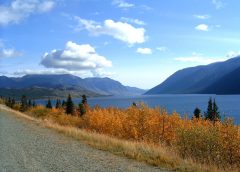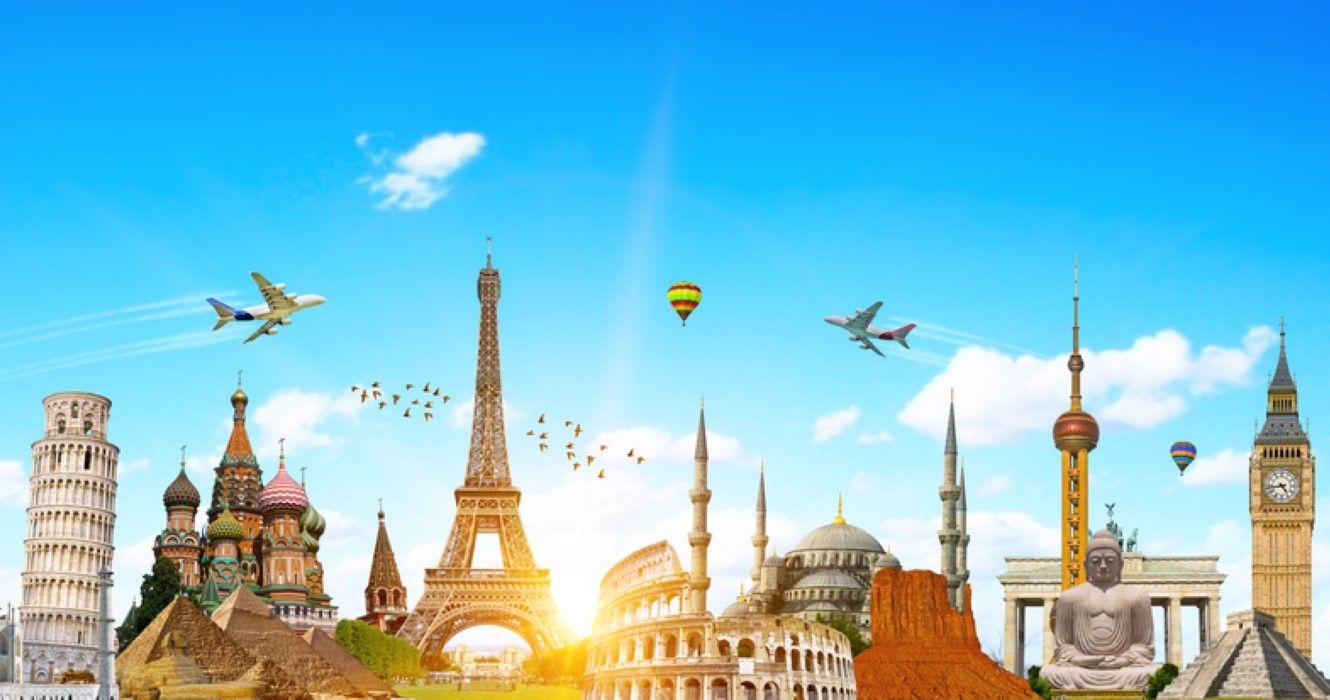
Why A Fall Cruise In Alaska Was One Of My Favorite Travel Experiences
[ad_1]
Alaska is often a place on a must-see list, but out of reach for financial and time constraint reasons for many people. My husband and I were no exception. However, a few years before we were ready to retire, our investments did extremely well. It was an easy decision to turn our Christmas gift to each other into a trip to Alaska.
We love to travel in September, mainly because school has started reducing the crowds at our nation’s favorite hot spots. A side benefit of fewer crowds is the increase of competition among places where tourism is their main revenue, so prices fit our budget better.
The big downside is colder weather in the fall months, and we were going north! However, living in South Dakota at the time, we both had plenty of winter gear. Once again, no problem.
Next, we faced the choice of whether to fly or take a cruise and poured through travel guides for months, finally choosing a Princess cruise Inside Passage trip which meandered among islands along the Alaskan and Canadian coastline.
The real hook that caught our attention was the photos of fall colors blazing through the Yukon Territory of Canada. Taking the advice from a friend, we booked the ship’s day trip at the same time we booked the cruise.
Pro Tip: Purchasing tickets for off-ship excursions online with the cruise company is easy and clever. The tours may also be more expensive when booked after boarding the ship.
Pouring rain and fog greeted us in Seattle and we began to wonder if traveling this late in the year had been a mistake. But, within a few days, two cruise excursions changed everything and the trip is still one of my favorite vacations of all time.

The Mendenhall Glacier in the far distance
Photo credit: Ann Bush
The Inside Passage
The Inside Passage stretches hundreds of miles from Puget Sound, Washington through the British Columbia coast and into the Gulf of Alaska. There are more than 1,000 islands and an endless shoreline of beaches, coves, and bays.
Our first few days at sea were not pleasant. Fog rolled in, followed by rain pouring from a gray sky. However, we didn’t want to miss a thing concerning Alaska and spent most of the time in our warm and cozy room peering out the window. Thank goodness we had a balcony and after putting every piece of winter clothing on, sat outside comfortably with binoculars.
Pro Tip: Review the map of the cruise’s route to book a room on the side of the ship that faces the shoreline.

The Tracy Arm Fjords passage
Photo credit: Ann Bush
Quietly slipping by mountains carved by Mother Nature cruising the Tracy Arm fjord was inspiring. Yes, it was cold, the sky was stone gray, and the mountains blurred by a haze over the water — but watching icebergs floating beside the ship with the Mendenhall Glacier in the distance was very cool, no pun intended.
When the rain or fog prevented a balcony front seat view, we headed for the cruise’s center which offered a very electric casino, quiet library, and inspiring shopping mall. The live shows were excellent, and of course, the food was delicious no matter where or what we ate.
Pro Tip: Carry waterproof bags used by kayakers for tech equipment to still enjoy the outdoors even if it rains. Cameras can be hidden under rain ponchos easier than a rain jacket. I use one that folds up into a small bag that fits in my pocket.

Ann bonding with her crab before gently returning it to the sea
Photo credit: Ralph Bush
Crabbing Around In Ketchikan
The sun appeared when we reached Ketchikan, and the walk around town proved to be pleasant and very interesting, especially the Native American museums and colorful totem poles. We soon learned another big bonus of being on the last cruise of the season when we popped into a few stores. Everything is on sale, most items are discounted by over 50 percent including silver and gold jewelry and artwork. Christmas was just around the corner.
Later, we boarded a smaller boat to go crabbing. This tour is only available during the fall and early winter months because crab season in this part of Alaska has been limited to sustainably managing and preserving wild crab stocks. Our tour was to catch Dungeness crabs, recommended by Seafood Watch as a good alternative to “overfished fishes.”
As soon as we boarded, they gave us shiny yellow rain suits, and my heart sank thinking it was going to rain. Wrong. As the boat entered the open ocean, avoiding the waves rolling over the bow was our new amusing challenge to stay dry.
The young man leading our group did his best to yell above the boat motor and roaring sea waves. We rolled around with him laughing as we crabbing newbies hung on to each other. We learned how the crabs are located, the genius cage design, how to fling them out to sea, and what to do when pulled up full of crabs. It was so much fun.
Pro Tip: Our group was small, and everyone had hands-on experiences. There are larger boat tours made famous from a reality television series on the Discovery Channel. The experience may not be as exciting, but might be best for those who are prone to seasickness.

A ride on the White Pass and Yukon Railway proves to be scenic and fun.
Photo credit: Ann Bush
Look For Gold On A Train
The excursion from the Skagway port started with a bus ride on the Klondike Highway to the Canadian border. There we boarded the White Pass and Yukon historic train through the famous Yukon Territory and White Pass Summit.
The train was a product of necessity during the Klondike Gold Rush in 1896 when George Carmack and two First Nations companions, Skookum Jim (Hanson) and Dawson Charlie, discovered a few gold flakes in the Klondike region of Canada. Those few flakes created a stampede termed the Klondike Gold Rush.
A few years earlier, a Canadian survey team predicted the gold rush and was already planning for the rush of miners by designing a rail route through the mountains to the mines. The track is still the primary route to the heart of the Yukon Territory.
The three-foot narrow track gauge permits tighter radii on curves, allowing the train to follow the landscape and eliminate the need for tunnels. The train seemed at times to narrowly miss the mountain in spots.
Restored as a heritage railway in 1988, tourists from cruise ships became the new ticket buyers. The railway still uses vintage parlor cars plus new 19th-century cars with wheelchair lifts. The White Pass & Yukon Railway operates from May to September and offers a variety of trips differing in length, duration, and price.
We hit gold — the fall foliage timing was perfect with rows of golden leaves at their peak waving in the breeze. The breathtaking views toward the bottom of steep canyons give rise to a spectacular ride with scenery only visible via the train.
Pro Tip: The most beautiful views are from a moving train and best to use a camera with faster shutter speed options.

The Barracks at Carcross is the best place to purchase Yukon Territory gifts.
Photo credit: Ann Bush
Take A Step Back In Time
The last stop on the train is Carcross, Canada, a unique isolated village originally named “Caribou Crossing” in 1899 referring to the spot where massive caribou herds crossed for centuries. The rustic town where 301 people from the Tagish First Nation live was alive as we followed the walking tour map to elegant historic buildings, totem poles, rustic log cabins, and wooden bears.
A historic landmark, the original Caribou Hotel built in 1898 unfortunately burnt to the ground in 1909 and was rebuilt soon afterward. Mrs. Bessie Gideon managed the hotel until her death in 1933, however, her ghost is said to roam the third floor. Polly, a parrot that lived in the hotel for 54 years, entertained guests with his rendition of “Springtime in the Rockies”. Honoring Polly, the Surly Bird Saloon is open on weekends.
One of the most interesting buildings was the Skookum Jim House, built just after he discovered gold. Covered in cherry red paint mingled with black and blue pictures of Yukon Territory animals, the exterior mural was designed in the coastal tradition by Tlingit artist Keith Wolfe Smarch. Skookum Jim donated the home to the Wolf Dakl’aweidi Clan of the Tagish First Nation people.
The Barracks is a log home built in 1921 by a White Pass Railway foreman from trees burned in a fire near Lake Bennett. The logs were placed vertically to form a round base with oakum chinking between logs. The home later served as the Royal Canadian Mounted Police barracks with an adjoining jail cell where a lot of selfies are taken. Today, the Barracks showcases artists specializing in the Spirit of the North.
Pro Tip: While in Skagway before you board the bus, visit the Klondike Gold Rush National Historic Park.

Entering the Canadian Yukon Territory along the Klondike Highway
Photo credit: Ann Bush
If You Go
September weather on the ship when at sea was very cold, however, the port calls were warmer only requiring a light jacket. The Canadian Yukon Territory temperature ranges from 48 to 60 degrees Fahrenheit. Even when the sun shines, the temperature will cool off immediately when a cloud glides overhead. Bring plenty of long sleeve shirts, closed-toe water-proof walking shoes, a hat, and gloves. Fleece vests and windbreakers will be your favorite go-to’s. Don’t bring a sweatshirt because there will be oodles of distinctive varieties to purchase at great prices.
For more information on traveling to Alaska, check out these articles:
[ad_2]
Source link

